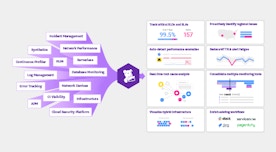
Brianne Bujnowski
Postmortems are a key part of incident management: They drive system reliability improvements and provide crucial insights for preventing and mitigating future incidents. But creating a postmortem is often a slow and inefficient process. Responders need to piece together its narrative by manually collating data from across incident management timelines, graphs, monitors, and collaboration tools. This fragmented, labor-intensive process can lead to a postmortem that's incomplete and inaccurate, hindering your team's ability to effectively learn from the incident. Datadog Incident Management drafts postmortems automatically, eliminating toil and quickly delivering valuable insights. You can create and share comprehensive, accurate postmortems that include rich incident data such as monitor events, changes in severity, and communication among responders. By speeding up the creation of postmortems, Datadog enables you to quickly apply what you've learned to resolving post-incident tasks, improving the reliability of your services, and strengthening your incident response process.
In this post, we'll show you how Datadog Incident Management helps you:
- Draft postmortems automatically
- Explore your postmortems' dynamic data
- Collaborate to create actionable knowledge
Draft postmortems with one click
From within Incident Management, you can generate a postmortem with a single click. Datadog drafts the report by automatically drawing relevant data from the incident timeline, potentially saving your team many hours of work reconstructing what happened. The postmortem reflects the sequence and timing of relevant events, beginning with the initial page that triggered the incident, such as one sent automatically by On-Call when a monitor is triggered. It also includes relevant Slack or Microsoft Teams messages from incident responders and changes to the incident's status or severity.
To define the content and format of your report, Datadog combines incident timeline data with a postmortem template that you select. You can choose to base your report on a default template, or you can create one or more custom templates that produce postmortems with varying levels of detail. You can define which template will be applied based on an incident's severity. For example, you can create a template for high-severity incidents that includes more detail than you would include for low-severity incidents.
Template variables specify the incident-specific data—such as severity, start time, impact, and root cause—that will be included in the report. You can use AI incident variables to automatically bring AI-generated insights into your postmortem. AI incident variables help ensure that your postmortem realizes its full value by clearly presenting critical incident information including an incident summary, lessons learned, and customer impact.
The following screenshot shows a postmortem template that lays out the data to be included in the report. It places template variables into the report and formats it using Markdown. Note that the template includes the AI incident variables {{incident.ai_customer_impact}} and {{incident.ai_summary}} to automatically provide this critical information for readers.

Provide deep context with interactive Notebooks
When postmortems are published as static documents, they represent a snapshot of the incident's history. But these artifacts can fail to capture the rich technical context needed for thorough investigations. For example, screenshots in a static postmortem quickly become outdated and lack the interactive depth necessary to gain a full understanding of the incident.
Datadog solves this problem by building each postmortem as a Notebook, which enables you to include dynamic data in the document. The logs, traces, and interactive graphs your responders share in Slack or Teams are automatically embedded in the postmortem, enabling readers to actively explore metrics that show performance trends and anomalies from relevant services. Readers can filter the data and reveal further context, change the timeframe to visualize system behavior leading up to the incident, and pivot to view other relevant data within the Datadog platform.

Collaborate to build actionable knowledge
Incident management is a collaborative activity, and it's essential that your postmortem process gathers the combined perspective and experience of the many responders who participate. You can easily share your postmortem and work together to assemble a complete and accurate record of the incident's events, causes, mitigations, and resolution. After you've refined and enriched the report to capture the complete story of the incident, you can share it for a wider audience or export it to common formats such as PDF and Markdown.
The knowledge contained in your organization's collection of postmortems is a key resource for teams to apply against future incidents, and it's critical that they can quickly find relevant information when the need arises. Effectively tagging your postmortems with relevant metadata is essential to ensuring that teams can unlock their full value for speeding up troubleshooting and minimizing downtime. Tags enable responders to easily find postmortems that describe relevant incidents based on, for example, the errors presented, services affected, or successful resolution steps. This helps responders more effectively analyze recurring failures, evaluate the effectiveness of past remediations, and improve both system reliability and incident response.
Get started with actionable, automated postmortems
Datadog brings efficiency to your incident management process by helping you quickly create postmortems that deliver lasting and actionable insights. By automating the drafting process and embedding deep technical context, you empower your teams to save time, learn quickly, and drive meaningful improvements. See our documentation to learn more about how Datadog can support your on-call and incident management processes, and how Notebooks help you explore and share stories with your data. And if you're not yet using Datadog, get started today with a free 14-day trial.





